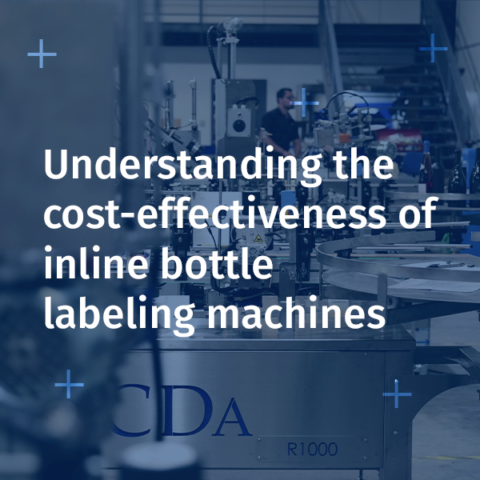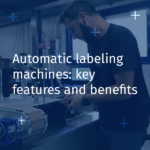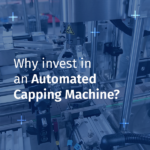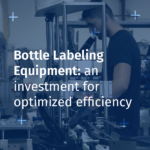Inline bottle labeling machines play a important role in modern production lines, ensuring fast, precise, and consistent labeling throughout the bottling process. Unlike manual or semi-automatic systems, these machines operate continuously without human intervention, minimizing production time and errors. Whether you’re a small business looking to scale or a large organization seeking greater efficiency, investing in an inline labeling machine offers substantial long-term financial benefits.
In this article, we’ll explore how these machines work, how they reduce costs, and why they represent a profitable solution for various industries.
Cost-effectiveness of inline Bottle Labeling Machines
- Reduced Labor Costs
One of the primary sources of savings from inline labeling machines is the reduction of labor costs. Manual systems require constant operator supervision and application of each label, whereas inline systems run autonomously. This reduces the number of workers needed on the production line, allowing businesses to reassign personnel to more strategic tasks.
-
- Key Statistic: According to a study by the Association for Packaging and Processing Technologies (PMMI), companies using automated inline labeling systems have cut labor costs by an average of 30%.
- Increased Production Speed and Reduced Downtime
Inline labeling machines are designed for high-speed operation, handling large volumes of bottles in a short amount of time. For example, a well-calibrated inline machine can label up to 300 bottles per minute, compared to just 40 to 60 bottles with a semi-automatic system. This boost in speed allows businesses to meet market demands faster while maintaining a consistent quality.
- Minimal Waste and Improved Label Precision
Labeling errors, such as misalignment or improper application, can lead to increased costs through wasted materials and re-labeling. Inline labelers are equipped with high-precision sensors that ensure exact label placement on each bottle cycle.
-
- Key Statistic: By reducing labeling errors from 15% to less than 1%, companies can save thousands of dollars annually on material and production costs.
Budgeting for an inline labeling machine: initial costs vs. long-term savings
Investing in an inline labeling machine may seem costly upfront, but the long-term savings make it a worthwhile expenditure. Here are some considerations when budgeting for an inline system:
- Initial Acquisition Cost
The price of an inline labeling machine varies depending on its complexity, production capacity, and customization options. Basic machines start around $25,000 and can go up to $100,000 for more sophisticated systems.
- Operational Savings
Savings from reduced labor costs, fewer labeling materials, and minimized errors contribute to a quick return on investment (ROI). On average, companies see an ROI in 2 to 3 years, sometimes even faster for high-volume production lines.
- Maintenance and Durability
While maintenance costs should be considered, modern inline labeling machines require less upkeep compared to semi-automatic or manual systems. Regular cleaning and component checks (e.g., sensor cleaning, roller alignment) are usually sufficient to ensure optimal performance.
Industry applications: How different sectors benefit from inline labeling?
Inline labeling machines are used across various industries, each with unique needs for production volume, precision, and regulatory compliance.
1. Beverage Industry
Beverage producers benefit from the high-speed capabilities of inline labeling machines, which can handle a range of bottle shapes and sizes. Accurate labeling is essential for displaying nutritional information and legal disclaimers.
-
- Example: A soft drink manufacturer increased production capacity by 25% when switching from manual to inline labeling, reducing labeling errors from 12% to 1%.
2. Cosmetics and Personal Care
In the cosmetics industry, where presentation is critical, inline labeling machines apply transparent or embossed labels with precision, ensuring a flawless appearance.
3. Pharmaceuticals
Pharmaceutical companies have stringent requirements for label readability and traceability. Inline machines provide unparalleled precision with integrated barcode verification and FDA compliance features.
Minimizing downtime and maintenance costs
To maximize the cost-effectiveness of an inline labeling machine, it is essential to minimize downtime and keep the machine in top condition. Here are some tips for reducing maintenance costs:
- Regular Cleaning: Clean the rollers and sensors regularly to prevent buildup that can affect label placement.
- Monitor Wear Parts: Identify and replace critical components (e.g., belts, cutting blades) at the first signs of wear.
- Software Updates: Ensure that control software is up to date to take advantage of the latest improvements and diagnostics.
Conclusion: Why Investing in an inline labeling machine makes financial sense?
In conclusion, inline bottle labeling machines are a strategic investment for businesses of all sizes, offering significant savings, increased productivity, and precise labeling. With a quick return on investment and flexibility to adapt to various production configurations, they are ideal for companies looking to modernize their packaging lines.







